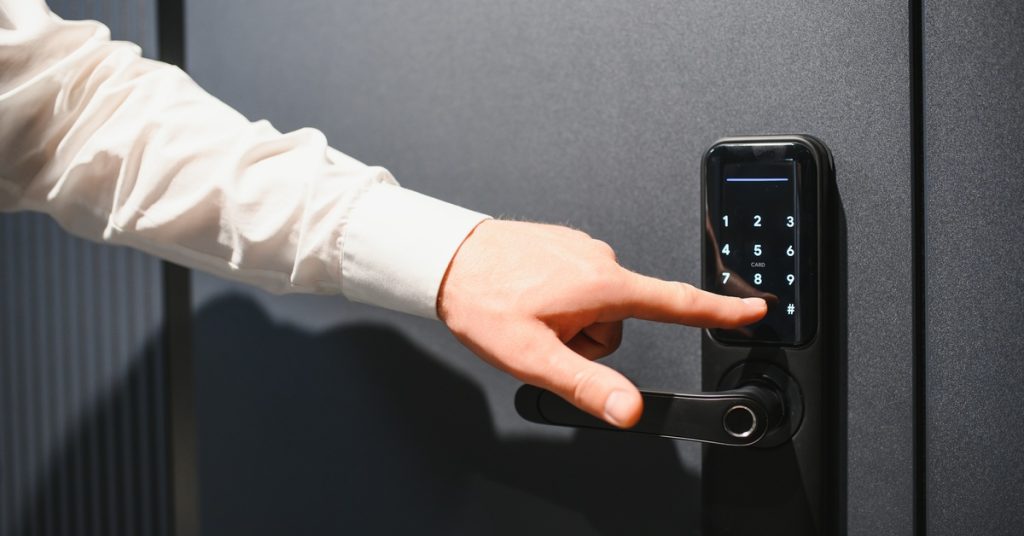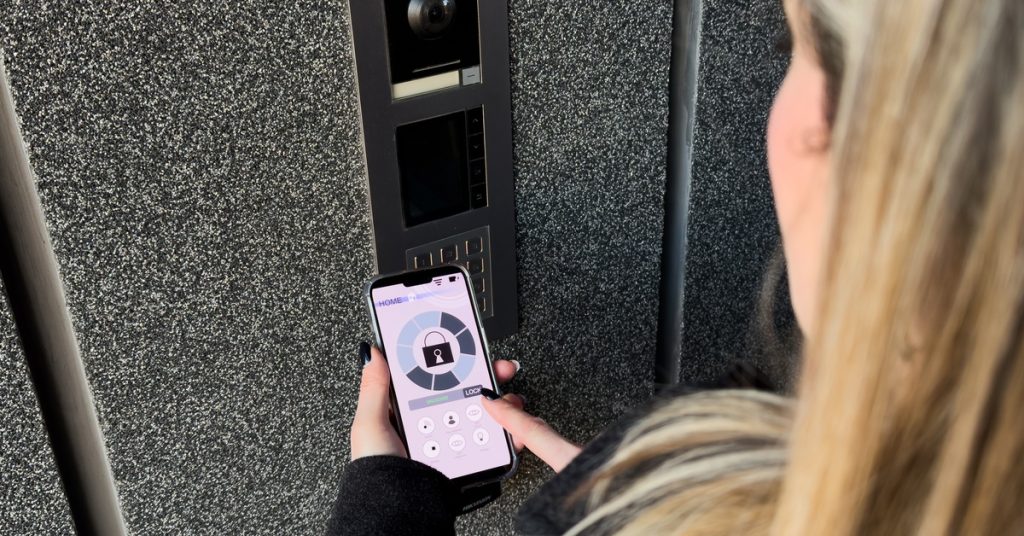The Benefits of a Keyless Security System

Many commercial and industrial facilities use keyless security systems because they offer features that traditional lock-and-key setups cannot match. From improving access control to boosting operational efficiency, these systems provide solutions that meet the demands of complex business environments. For more insights, we’ll explore the benefits of keyless security systems that can transform how your facility manages safety measures.
What Is a Keyless System?
Keyless security systems operate using advanced technology embedded in the access point and the credential. Instead of inserting a key, users present a credential, such as a keycard, smartphone, or biometric identification like a fingerprint.
The access point, equipped with a digital receiver or reader, verifies the credential against preprogrammed permissions stored in a database or cloud-based management system. Once authenticated, the system activates the locking mechanism, allowing entry.
Technologies and Materials
Unlike traditional locks with mechanical components, keyless systems integrate a mix of hardware and software. The locking hardware may include electromagnetic locks, solenoids, or drop bolts. Materials such as durable metals, weatherproof casings, and tamper-resistant composites help the locks withstand harsh industrial environments.
On the software side, cloud-based systems like PAC-BLU offer enterprise-grade encryption and centralized management, enabling administrators to handle permissions and monitor logs remotely from their devices.
Enhanced Access Control and Flexibility
A keyless security system changes how facilities approach access management, offering better control than traditional locks. You can control entry at a granular level, specifying who has access to restricted zones and under what conditions.
This adaptability is essential for certain setups where multiple teams and departments operate. Whether you’re managing access in a manufacturing plant, a corporate office, or a data center, you can enjoy greater peace of mind that only the right people get in while keeping unauthorized individuals out.
Grant and Revoke Access Instantly
Physical keys add inefficiency when managing a workforce, particularly in high-turnover environments. Keyless systems simplify this process with digital credentials like PIN codes, keycards, or mobile app authorization.
For example, if someone exits the company, you can disable their credentials in real time without any physical retrieval effort. This immediacy reduces the chance of a potential data breach or theft during lapses in collection.

Segment Access for Different Roles
Keyless systems allow you to fine-tune access depending on job roles. For instance, warehouse employees may require entry to storage facilities but don’t need access to executive offices. Conversely, maintenance teams often have varying responsibilities that require periodic entry to different locations, such as server rooms or roof spaces. You can assign user-restricted access for each team.
This compartmentalized approach encourages smoother workflows while minimizing accidental security violations. Traditional locks fail to provide this level of segmentation, often forcing companies to rely on physical monitoring to compensate.
Reduced Risk of Lost or Stolen Keys
It’s easy to lose, misplace, or duplicate traditional keys, which poses an ongoing risk to facility security. Moving away from physical keys resolves these vulnerabilities while reducing administrative and operational headaches.
Moreover, the cost of replacing physical locks adds up quickly, especially across sprawling facilities with dozens of access points. Every lost key means either rekeying or replacing locks to prevent future breaches. Keyless systems eliminate this logistical hurdle. If an employee loses their keycard or forgets a PIN, you can simply deactivate the lost credential and issue a new one through the central system.
Deter Unauthorized Duplication
People can duplicate traditional keys without detection, often leaving facilities vulnerable to unauthorized access. However, keyless security systems prevent this. Digital credentials operate on encrypted platforms, making unauthorized replication nearly impossible. This system provides added protection for businesses dealing with sensitive information or high-value goods.
Strengthening Security for Temporary Access
A short-term contractor, visiting client, or vendor may require access to specific areas for a defined period. Handing over a physical key increases the risk of loss or misuse. With a keyless approach, you can issue temporary, time-sensitive credentials.
For example, a construction contractor repairing a roof may receive access during daylight hours and solely to the roof entry points. Once their task concludes, the credentials expire automatically, requiring no physical retrieval or follow-up verification effort. This level of access minimizes security gaps and ensures complete control over facility access turnover.
Increased Operational Efficiency
Increased operational efficiency is another benefit of keyless security systems, eliminating repetitive, manual tasks, like locking and unlocking doors, distributing keys, or responding to missing credentials. These systems help businesses focus on productivity rather than administrative hassles.
For example, a manufacturing plant can program its entry points to unlock during shift changes and secure themselves after hours for consistent operations without additional oversight. This automation enhances security and reduces the likelihood of human error, like forgetting to relock critical areas.
Real-Time Access Monitoring and Alerts
Keyless systems elevate the standard for monitoring facilities by offering real-time access tracking and alerts. Real-time monitoring enables organizations to address security concerns as they arise, minimizing potential risks and enhancing accountability across operations.
With a robust keyless system, leaders receive alerts the moment an unauthorized access attempt occurs. For example, the PAC-BLU system, available through H To O Supply, provides this functionality via the PAC-BLU NexGen app, allowing users to oversee security from anywhere.
Improve Incident Response
A keyless system’s real-time capabilities extend beyond notifications; they also allow swift action during security breaches. PAC-BLU interfaces can seamlessly pair with additional security measures such as surveillance cameras.
For example, a failed access attempt can simultaneously activate nearby cameras, providing instant video feeds to security personnel while the system locks down vulnerable points. The combination of alerts and visual confirmation helps companies maintain control, even during unexpected events.

Enhanced Scalability for Growing Facilities
Business growth introduces new challenges, particularly in managing security. Adding employees, expanding facilities, and accommodating contractors can quickly overwhelm traditional key-and-lock setups. Keyless systems adapt effortlessly to these challenges, providing flexibility that scales with your operations. Whether adding users or accommodating new building layouts, these systems grow alongside your business without requiring constant overhauls.
When new employees join, you can issue digital credentials instead of creating new physical keys or changing existing locks. This process takes minutes rather than hours or days. You can send credentials digitally so workers have immediate access, even if they’re in remote locations or on tight timelines.
Save Time With Centralized Management
Expanding facilities often means managing a growing list of access points. Keeping track of dozens or hundreds of physical keys across sites is inefficient and prone to errors. With a keyless system, all management takes place on a singular platform, consolidating the process into one streamlined interface.
For example, if an employee’s credentials need modification due to a promotion or department transfer, you can adjust instantly across multiple access points. Similarly, if issues arise at one location, you can address them remotely, eliminating the need for on-site intervention.

Recent Comments